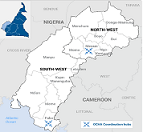Retesting of Patients Receiving Antiretroviral Treatment at HIV Care and Treatment and Prevention of Mother-To-Child HIV Transmission Sites in Cameroon

Abstract:
The
World Health Organization recommends retesting of newly diagnosed HIV cases for
verification of results prior to antiretroviral therapy (ART) initiation. This
study aimed at ascertaining the HIV status of clients on lifelong ART. We tested
25% of ART clients in 6 care and treatment (C&T) sites and all HIV-positive
women receiving ART in 22 prevention of mother-to-child HIV transmission (PMTCT)
sites in Northwest and Southwest regions. Testing was proposed consecutively to
clients in group education sessions during ART refill visit until the sample size
was achieved. Individual counselling was provided to clients who opted to be retested.
Testing was with Determine HIV-1/2 and First Response rapid tests and further testing
was with DNA-PCR. Clients with negative test results were counseled to discontinue
ART. Results were analyzed comparing misdiagnosis at ART and PMTCT sites. A total
of 4526 ART clients were retested for HIV; 3914(86.5%) from ART and 612(13.5%) from
PMTCT sites. Female participants dominated (79%) and the median age was 39 years.
Higher proportions of clients retested at PMTCT sites were negative with both tests
(0.8% vs 0.1%) and had discordant results (1.1% vs 0.4%) than at ART sites. All
32 clients with negative or discordant results were tested with DNA-PCR and 22(0.5%)
were negative; 11(0.3%) in ART and 11(1.8%) in PMTCT sites. HIV positive status
was confirmed for 99.5% of clients retested, with a lower rate at PMTCT (98.2%)
than C&T (99.7%) sites; meaning misdiagnosis and inappropriate ART treatment
was more likely at PMTCT. Adherence to recommendation for HIV retesting for verification
will reduce inappropriate treatment.
References:
[1] R. A. Ajeh et al., ‘Determinants of retention in HIV
antiretroviral treatment (ART) in the Cameroon International epidemiology
Database to Evaluate AIDS (IeDEA) study clinics: the context of the HIV treat
all strategy in Cameroon’, p. 12.
[2] A. A. Agbor et al., ‘Characteristics of patients
co-infected with HIV at the time of inpatient tuberculosis treatment initiation
in Yaoundé, Cameroon: a tertiary care hospital-based cross-sectional study’,
Arch Public Health, vol. 73, no. 1, p. 24, Dec. 2015, doi: 10.1186/s13690-015-0075-y.
[3] CAMPHIA. Cameroon population-based HIV impact
assessment CAMPHIA 2017. Summary sheet: preliminary findings. New York, USA:
ICAP at Columbia University; 2018.’
[4] ‘Cameroon_SDS_Final-Public_Aug-11-2021.pdf’.
Accessed: May 02, 2022. [Online]. Available: https://www.state.gov/wp-content/uploads/2021/09/Cameroon_SDS_Final-Public_Aug-11-2021.pdf.
[5] West and Central Africa | UNAIDS’.
https://www.unaids.org/en/keywords/west-and-central-africa (accessed Apr. 22,
2022).
[6] T. P. Muffih, ‘CBCHS Annual Report 2020’, p. 114.
[7] Operational Guidelines for The Implementation of the
“Test and Treat” Strategy In Cameroon, February 2017’.
[8] World Health Organization, caring for women
subjected to violence: a WHO curriculum for training health-care providers.
Geneva: World Health Organization, 2019. Accessed: May 02, 2022. [Online].
Available: https://apps.who.int/iris/handle/10665/330084.
[9] S. C. Kagulire et al., ‘Field evaluation of five
rapid diagnostic tests for screening of HIV-1 infections in rural Rakai,
Uganda’, Int J STD AIDS, vol. 22, no. 6, pp. 308–309, Jun. 2011, doi:
10.1258/ijsa.2009.009352.
[10] D. B. Klarkowski, J. M. Wazome, K. M. Lokuge, L. Shanks,
C. F. Mills, and D. P. O’Brien, ‘The evaluation of a rapid in situ HIV
confirmation test in a programme with a high failure rate of the WHO HIV
two-test diagnostic algorithm’, PLoS One, vol. 4, no. 2, p. e4351, 2009, doi:
10.1371/journal.pone.0004351.
[11] C. Johnson et al., A report on the misdiagnosis of
HIV status. World Health Organization, 2015. Accessed: May 16, 2022. [Online].
Available: https://www.ncbi.nlm.nih.gov/books/NBK316023/.
[12] World Health Organization, ‘Diagnostics for HIV
diagnosis’, World Health Organization, Geneva,
2015. Accessed: May 02, 2022. [Online]. Available: https://apps.who.int/iris/handle/10665/180221.
[13] Dupwa et al. - 2019 - Retesting for verification of
HIV diagnosis before.pdf’.
[14] False-Positive HIV Test Results’.
[15] Antiretroviral Therapy Guidelines for HIV-Infected
Adults and Adolescents May 2013(1) _0.pdf’. Accessed: May 02, 2022. [Online].
Available: http://naco.gov.in/sites/default/files/Antiretroviral%20Therapy%20Guidelines%20for%20HIV-Infected%20Adults%20and%20Adolescents%20May%202013%281%29_0.pdf.
[16] WHO report in partnership with UNICEF and UNAIDS,
June 2013’. Accessed: May 02, 2022. [Online]. Available: https://apps.who.int/iris/bitstream/handle/10665/85326/9789241505734_eng.pdf?sequence=1.
[17] Antiretroviral Drugs for Treating Pregnant Women for
Their Own Health and to Prevent HIV Infection in Their Infants. World Health Organization,
2010. Accessed: May 03, 2022. [Online]. Available: https://www.ncbi.nlm.nih.gov/books/NBK304945/.
[18] S. Khan et al., ‘Identification of misdiagnosed HIV
clients in an Early Access to ART for All implementation study in Swaziland’,
Journal of the International AIDS Society, vol. 20, p. 21756, Aug. 2017, doi:
10.7448/IAS.20.7.21756.
[19] N. Hsiao, A. Zerbe, T. K. Phillips, L. Myer, and E.
J. Abrams, ‘Misdiagnosed HIV infection in pregnant women initiating universal
ART in South Africa’, J Int AIDS Soc, vol. 20, no. Suppl 6, p. 21758, Aug.
2017, doi: 10.7448/IAS.20.7.21758.
[20] Avoiding false positives: rapid HIV tests vary in
their accuracy, so need to be used in combination’, aidsmap.com, May 02, 2017. https://www.aidsmap.com/news/may-2017/avoiding-false-positives-rapid-hiv-tests-vary-their-accuracy-so-need-be-used
(accessed Feb. 06, 2023).

